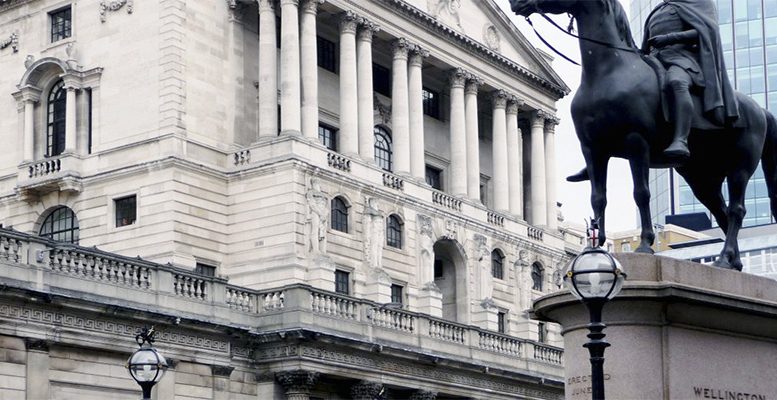David Page (AXA) The Bank of England (BoE) left policy on hold at its latest meeting. Bank Rate remained at 0.1% and the Asset Purchase Facility (APF) was left at £745bn. Both decisions were made unanimously. The BoE explained that the APF had risen to £684bn to date, buoyed by £230bn in gilt purchases and £9.3bn (of £10bn) corporate debt purchases. The current QE programme is expected to expire around the turn of the year and purchases have been lower than in Q2 given the improvement in liquidity conditions.
Minutes to the BoE meeting showed that the Committee was torn over the outlook, which it described as “unusually uncertain”. On the one hand the UK consumer had performed more strongly than expected and Bank estimates of Q3 GDP had been revised higher to now see it as around 7% below Q4 2019 levels (implying Q3 GDP growth closer to 19.5% than 18.3% in August). The BoE estimated that consumer spending on aggregate had returned to pre-Covid levels. This had reflected “flexibility” in spending patterns with consumers raising expenditure in certain areas – durables – where it had been reduced in others – social spending. The Committee also noted the strength of the housing market pick-up. However, it had doubts that this consumer strength would persist. In part this reflected an uncertainty of how much of the recent social spending pick-up would persist after the expiry of the August Eat-Out-to-Help-Out (EOHO) scheme. In part it reflected uncertainties over the continuation of “comparatively strong” income growth households had enjoyed in recent months, considering that “this strength .. might not be sustained”, particularly as the government furlough scheme wound up. The BoE also noted that investment intentions had weakened since July, with firms suggesting investment would be one-third to one-quarter below 2019 levels by end-year.
Against this backdrop the BoE left monetary policy unchanged. The Committee repeated that it “did not intend to tighten monetary policy until there was clear evidence that significant progress was being made in eliminating spare capacity and achieving the 2% inflation target sustainably”. This form of forward guidance is helpful at the margin and reflects developments in other central banks guidance – notably the Federal Reserve. However, markets are more interested in whether there will be further stimulus. The BoE noted that OIS markets expected rates to be 20bps lower by mid-2022. It also stated that it had discussed the effectiveness of negative rates and “to explore” how they could be implemented effectively, but suggested this was in case they were needed at “some point”, while adding that the BoE and PRA would begin “structural engagement on the operation considerations in 2020 Q4”. To our minds, the BoE would not be in a position to adopt any form of negative rates this year, but today’s minutes suggested the Bank was more seriously contemplating them for the future.
We continue to forecast the BoE to extend its QE program beyond the end of this year and see an additional £75bn as facilitating an extension into Q2 next year, with some further deceleration in the pace of asset purchases likely early next year. We pencil in an announcement in November in reaction to updated forecasts in the Monetary Policy Report. However, we note that the BoE last time chose to only extend the programme at the last minute (in June), and could do the same again this time in December. Looking further ahead, we do expect the UK to enjoy a continued recovery into 2021 and thus to avoid the need for a reduction in interest rates from the current level. However, this assumes a trade agreement with the EU and that further Covid problems are managed with significantly less adverse impact on activity than before. Both assumptions exhibit clear downside risks. This could encourage additional stimulus next year – possibly from February – and this could see the BoE lower the policy rate (we think no lower than 0.0%), but provide targeted lending to banks below the policy rate, which would facilitate persistently negative market rates.
Financial market reaction focused on the increased discussions of negative interest rates, with 2-year gilt yields falling 6bps to -0.12% and 10-year rates down 5bps to 0.17%. Sterling also dropped by 0.7% to both the dollar and euro to $1.288 and £0.916 respectively.





